How to connect a printer to a laptop or desktop computer is always a question if you frequently need to print documents, photos, manuscripts, etc. The process of connecting a wired or wireless printer to a Windows or Mac computer is quite similar. We will provide detailed instructions regardless of which method you choose.
Table of Contents
How to connect a printer to a laptop or desktop computer: Windows via USB cable
One of the most popular ways to connect a printer to a desktop or laptop is via a USB connection.
1. A USB cable that works with both your computer and printer is required in order to create a USB connection. Afterward, turn on your printer. Note that you should not pull the cable too tight.
2. Plug the USB cable into the USB port of your desktop or laptop computer that is turned on and unlocked. In some cases, simply connecting the printer to the computer will automatically configure and install, making it ready to use.
3. Click on the Windows icon in the bottom left corner of the screen. Select Settings.
 (Image credit: Microsoft)
(Image credit: Microsoft)
4. Click Devices or Bluetooth & devices on Windows 11.
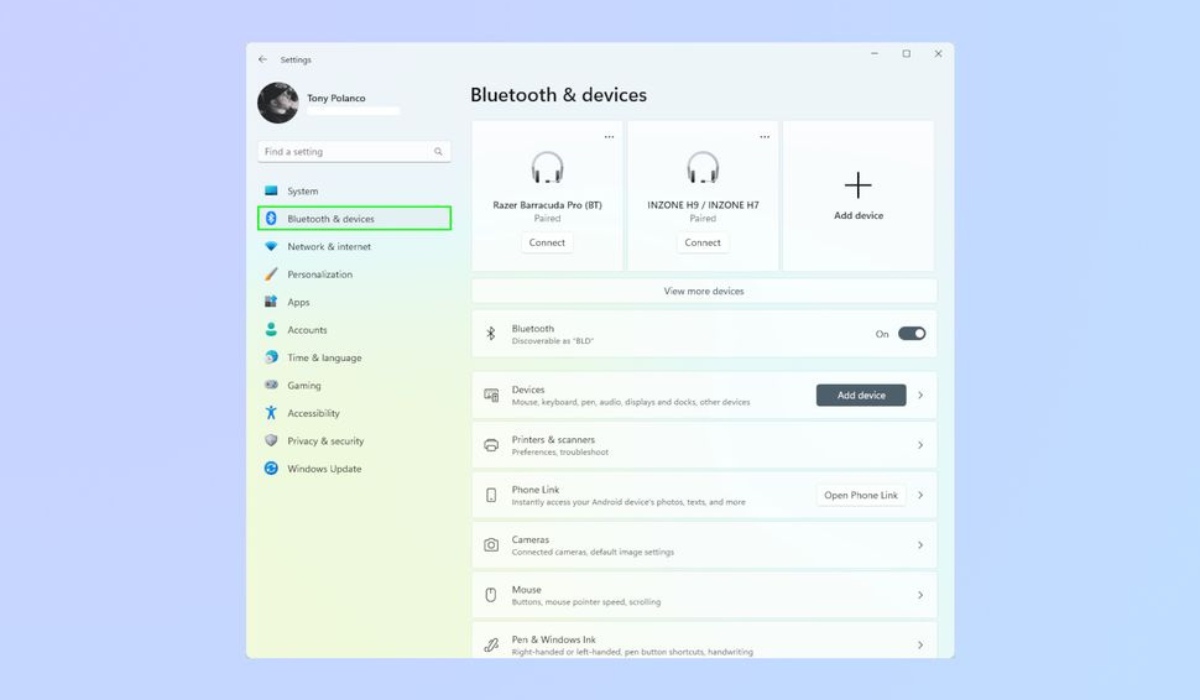 (Image credit: Microsoft)
(Image credit: Microsoft)
5. Select Printers & scanners.
 (Image credit: Microsoft)
(Image credit: Microsoft)
6. Click your printer’s name and click Add device.
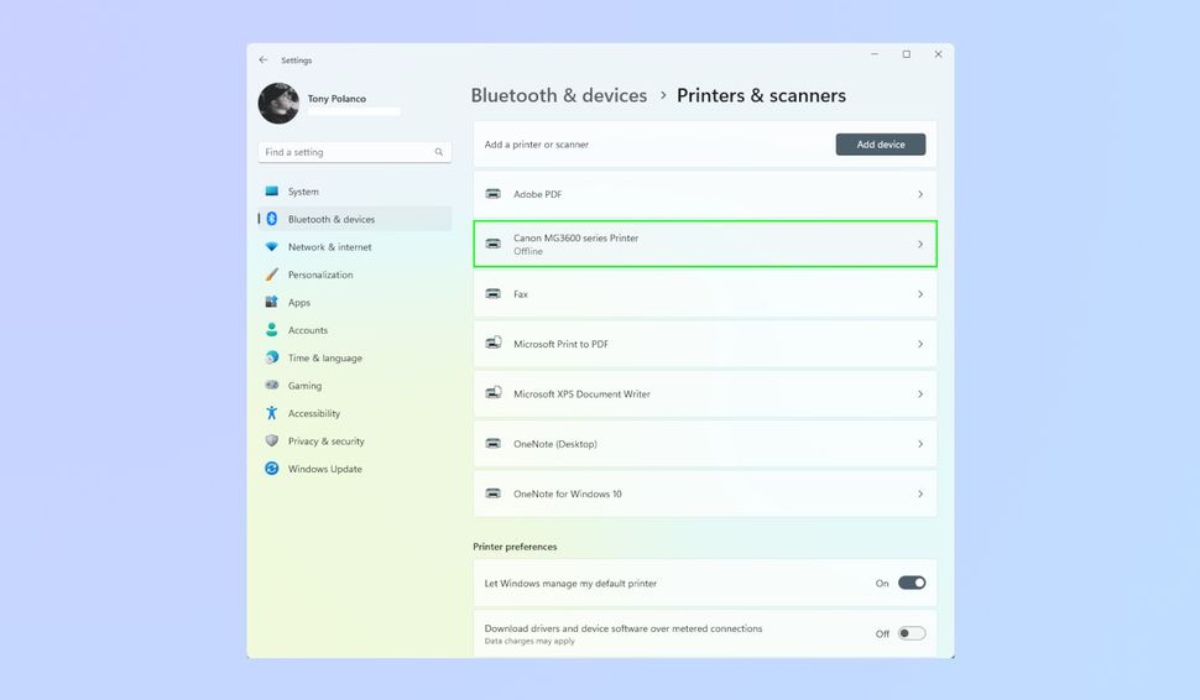 (Image credit: Microsoft)
(Image credit: Microsoft)
7. Follow the on-screen setup instructions. If prompted, insert the CD that came with the printer into your computer’s disc drive, or you can download similar software from the manufacturer’s website.
How to connect a printer to a laptop or desktop computer: Windows via wireless
1. Check if the printer’s wireless connection is through Bluetooth or Wi-Fi.
2. Place your computer in a location that can receive wireless signals. Note: Your printer must have Wi-Fi or Bluetooth enabled.
3. Use the printer’s display screen to set up Wi-Fi, then enter your Wi-Fi password. Ensure the printer is on the same Wi-Fi network as your computer. If connecting via Bluetooth – Press the “Pair” button, typically marked with the Bluetooth symbol “B” on or near it.
4. Follow steps 3 – 7 of the previous section.
Connect a Wired Printer to Mac
1. Place the printer near your computer, close enough for the cable to reach without being stretched.
2. Turn on your printer.
3. Turn on your computer and log in, connect the printer to the computer using a USB cable.
4. Click on the Apple icon in the top left corner and then select System Preferences.
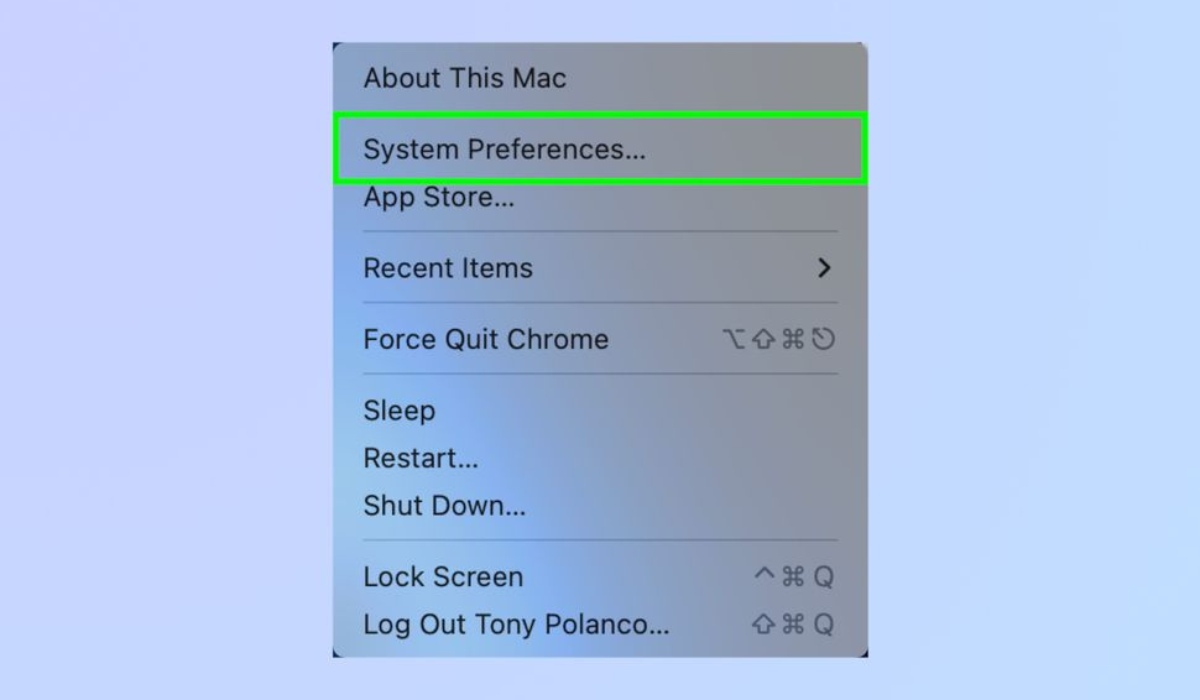 (Image credit: Apple)
(Image credit: Apple)
5. Click on Printers & Scanners.
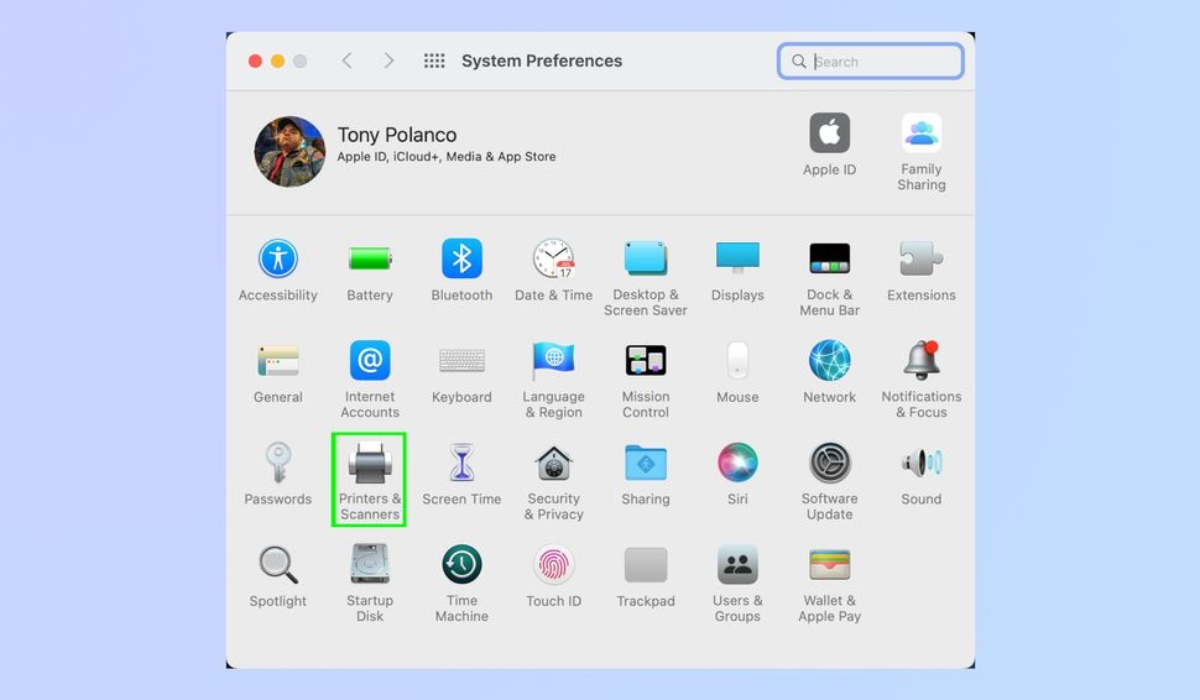 (Image credit: Apple)
(Image credit: Apple)
6. Select your printer.
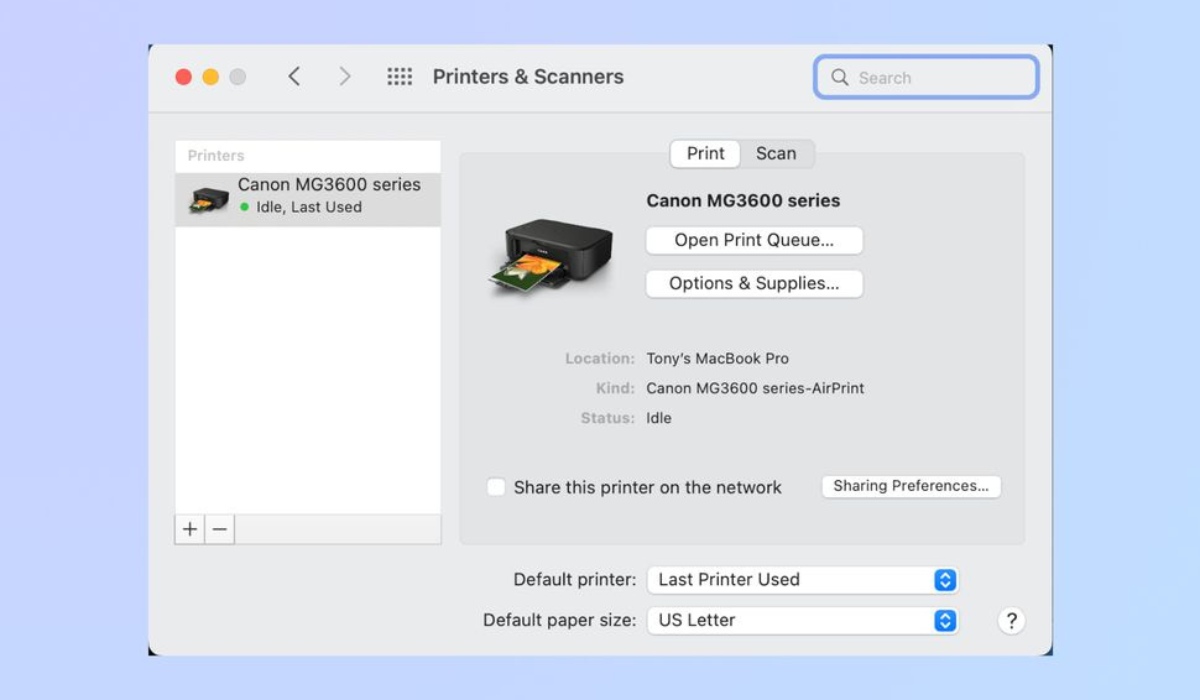 (Image credit: Apple)
(Image credit: Apple)
7. You can also add a printer by clicking the plus sign below the printer list. You will see your printer listed in the window. Click the Add button at the bottom right to add your printer.
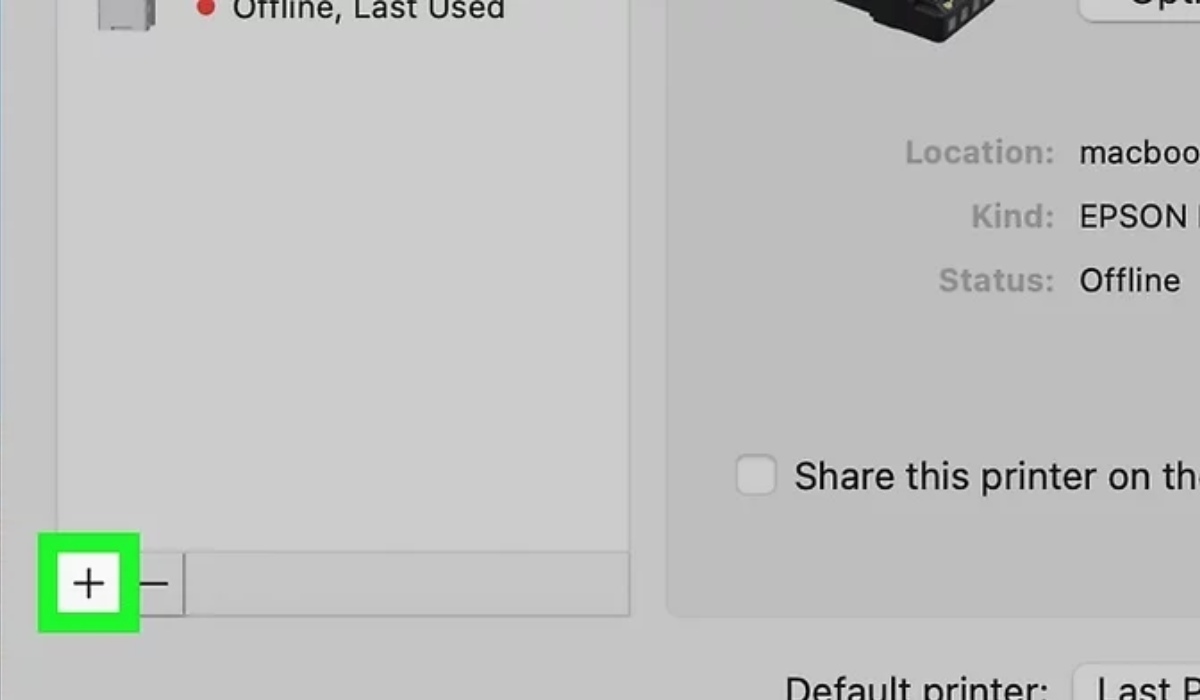 (Image credit: Apple)
(Image credit: Apple)
8. Follow the on-screen prompts. As long as your printer is compatible with your Mac, you may need to click the Download & Install or Install button on the pop-up window to complete the installation.
Connect a Wireless Printer to Mac
1. Check the Bluetooth or Wi-Fi connection of your printer.
2. Place your Mac in a location where it can receive wireless signals.
3. Turn on your printer.
4. Use the printer’s display screen to find Wi-Fi, then enter the password. It should be the same Wi-Fi your computer is connected to. If connecting via Bluetooth – Press the “Pair” button. Your Mac’s Bluetooth must be turned on.
5. Follow steps 4 – 8 from the previous section.
Common Connection Problems
Printer Not Detected: Verify that your printer is correctly connected using the selected connection method (USB, Ethernet, Wi-Fi, or Bluetooth) if your computer is not detecting it.
Verify that the cables are connected securely by checking them. Additionally, confirm that the printer is turned on.
Problems with Connectivity: Try restarting your computer and printer if you are periodically having problems with connectivity. Make sure there are no obstacles obstructing the signal and that they are within the range of your Bluetooth or Wi-Fi network.
Problems with printer drivers and software: Outdated or incompatible printer drivers and software might lead to issues with connectivity. Verify that the most recent software and drivers for your printer model are installed from the manufacturer’s website.
FAQs
Is the printer located too far away?
The truth is that your device will respond better the closer it is to the source, even though we would all like for it to work flawlessly from wherever in our homes or businesses. Try printing again from a closer distance, or try relocating your printer so it’s closer to your wireless router.
Is the correct driver still operational?
It could be necessary to reinstall your downloaded driver since it has been corrupted. Visit the website of the printer manufacturer to find and download the most recent driver after deleting the one that is currently installed on your computer.
How can I set up a Canon printer for WiFi?
To link the majority of Canon printer models to a wireless network, activate the Easy Wireless Connect function. Holding down the wireless connect button will cause a notification to show on the screen that says, “Follow the instructions.” This is how you activate it. Next, download and install the necessary software from Canon’s support website on your computer, which will vary based on the model of your printer and the operating system of your computer.
Conclusion
A desktop or laptop can be connected to a printer by a USB, Ethernet, Wi-Fi, or Bluetooth connection, among other means. Every approach has benefits and things to think about based on your own requirements and preferences.
For printing to function smoothly, your computer and printer need to be connected in a steady and dependable manner. You may reduce connectivity issues and ensure effective printing by using the proper connection techniques and troubleshooting procedures. Now, You have a lot of information about how to connect printer to desktop or laptop, let’s do it.
